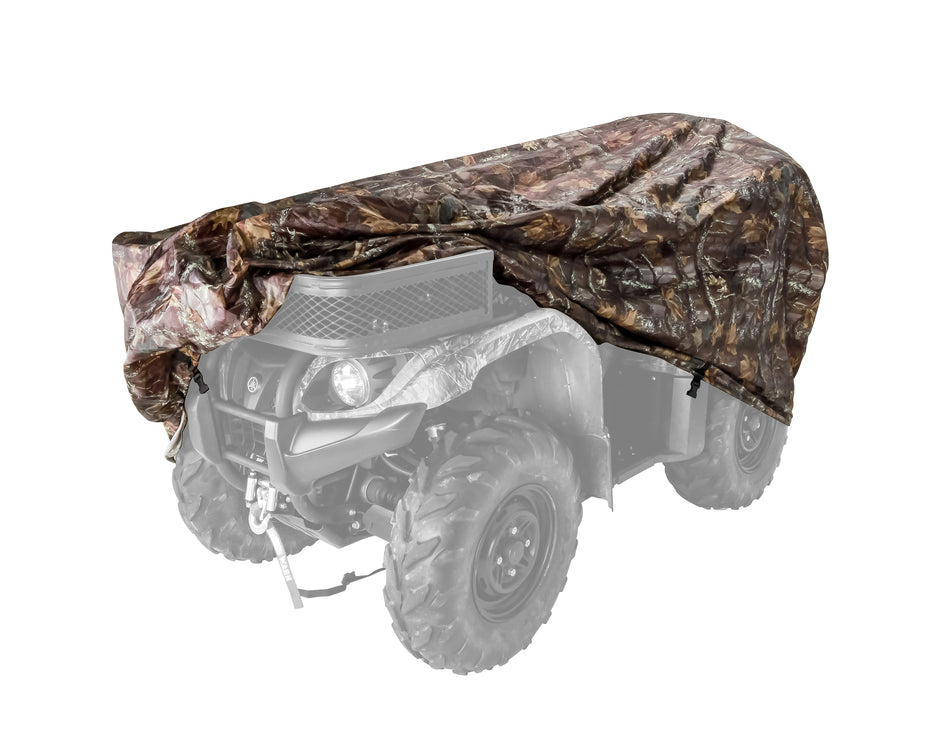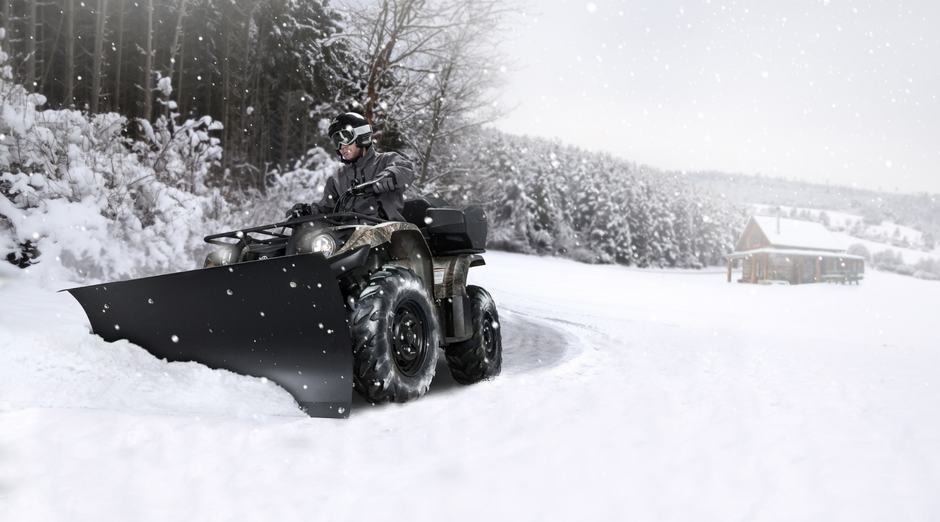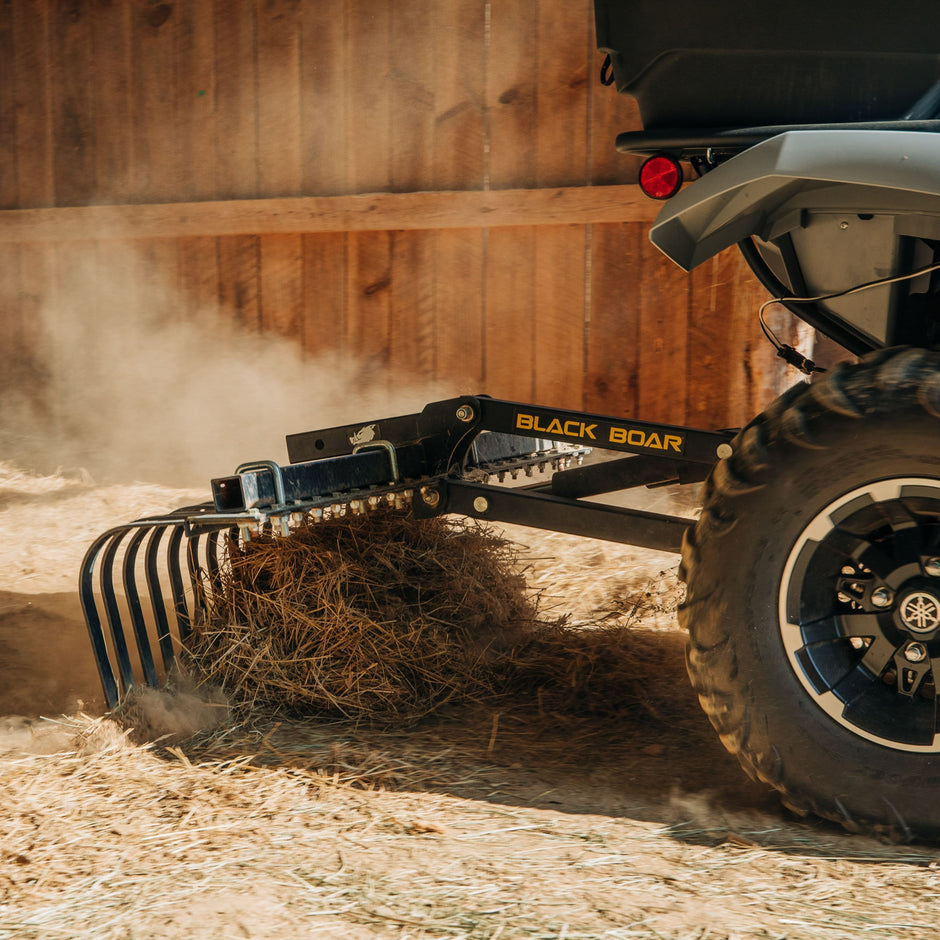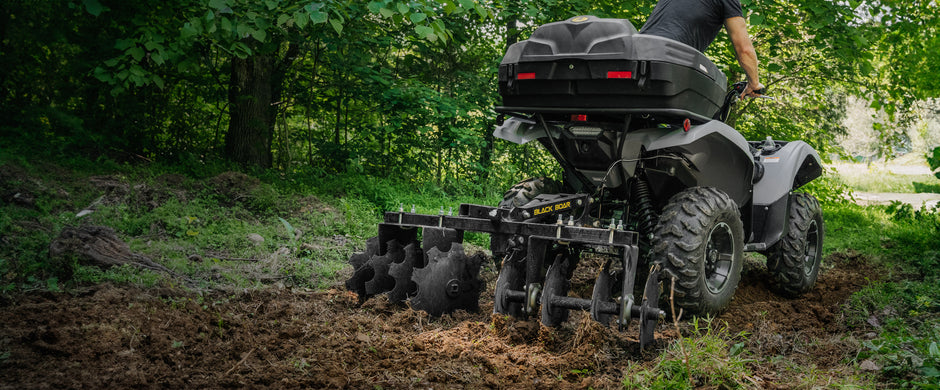Creating food plots can be a game-changer for attracting and supporting wildlife, particularly deer, on your property. Whether you're an avid hunter or just enjoy watching wildlife, food plots can help enhance your land. For beginners, using an ATV with the right Black Boar ATV implements is a practical and efficient way to establish these plots without needing heavy machinery. This guide will walk you through some basic steps and equipment needed to create your own food plot using your ATV.
- Choosing the Right Location
Selecting the right spot for your food plot is crucial. Look for areas that are relatively flat and have good soil. The plot should receive ample sunlight—at least 4-6 hours a day—since this is vital for plant growth. A nearby water source, like a stream or pond, is beneficial but not essential.
Consider accessibility too. You’ll need to get your ATV and equipment to the plot, so avoid areas with thick underbrush or steep inclines. Ideal locations might include open clearings, the edges of wooded areas, or fields that haven’t been cultivated in a while.
- Testing and Preparing the Soil
Before you start planting, it's essential to test your soil. You can purchase a soil testing kit from a local farm supply store or send a sample to your county extension office. The test will provide you with information on pH levels, nutrient content, and recommendations for lime or fertilizer.
- Clearing the Land
With your location chosen and soil prepared, the next step is clearing the area of any existing vegetation. This includes grasses, weeds, shrubs, and small trees. Use of a brush cutter or mower is perfect for this job. These tools can quickly and effectively clear the plot, leaving behind bare soil for planting.
After mowing, remove larger debris like rocks, sticks, and roots. This step ensures your planting area is smooth and free of obstructions that could damage your implements. The use of the Black Boar ATV Landscape Rake would be a great tool for this task.
- Tilling the Soil
Once the land is cleared, it’s time to till the soil. Tilling breaks up the soil, making it easier for seeds to take root. It also helps incorporate any lime or fertilizer you’ve applied into the soil. For this, you'll need the Black Boar ATV disc harrow or a plow attachment.
Start by making shallow passes with your ATV and harrow to break the surface. Gradually increase the depth with each pass until you’ve tilled the soil to a depth of 4-6 inches. If your soil is particularly compacted, you may need to go a bit deeper. Make sure to overlap your passes slightly to ensure even tilling.
- Planting the Seeds
Now that your plot is tilled and ready, it’s time to plant. The type of seed you choose will depend on the wildlife you want to attract and the time of year. Common food plot seeds include clover, alfalfa, chicory, and various grains like oats and rye.
Using a seed spreader attachment for your ATV, evenly distribute the seeds across the plot. ATV seeders come in various types, including broadcast spreaders, which are great for smaller seeds, and drop spreaders, which work well for larger seeds.
Once you’ve spread the seeds, lightly pack them into the soil to ensure good seed-to-soil contact. You can use the Black Boar ATV cultipacker or roller for this task. Simply drive over the plot to press the seeds into the soil, ensuring they are covered just enough to encourage germination while still being close to the surface.
- Watering and Maintenance
After planting, it’s important to water your food plot if you don’t expect rain. Watering helps the seeds germinate and establish roots. While some plots may rely on natural rainfall, consider using an ATV-mounted sprayer if you need to irrigate the area.
As your food plot grows, maintenance is key to keeping it healthy and productive. This might include periodic mowing to prevent weeds from taking over or applying additional fertilizer to support plant growth. Depending on the plant species, you may also need to overseed the plot every year or two to maintain its quality.
- Monitoring and Enjoying Your Food Plot
Once your food plot is established, monitor it regularly for signs of wildlife activity and plant health. Trail cameras can help you keep an eye on how the plot is being used, while soil tests every few years will ensure the ground remains fertile.
A well-maintained food plot can last for several years and become a valuable part of your land. Not only will it attract wildlife, but it also provides them with the nutrition they need to thrive. Plus, using your ATV and the right implements makes the process efficient and enjoyable.
Final Thoughts
Creating a food plot with your ATV and Black Boar implements is a rewarding project that benefits both you and the wildlife on your land. By emphasizing a streamlined, sturdy design, Black Boar implements prioritize ease of use and effectiveness. Black Boar implements are light enough to be installed with just one person, but heavy-duty enough to withstand the hard work they’re designed to do. With time and care, your food plot will become an integral part of your property, providing a space where nature flourishes and wildlife thrives.







